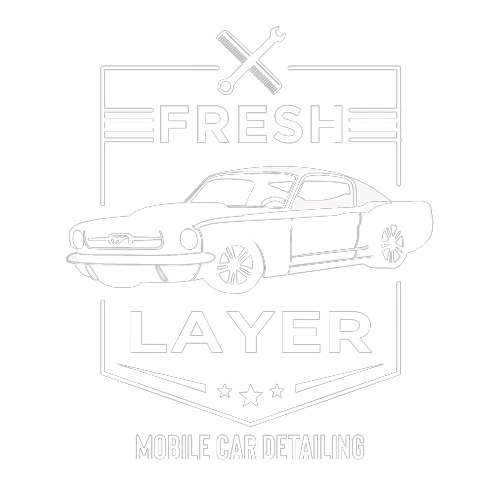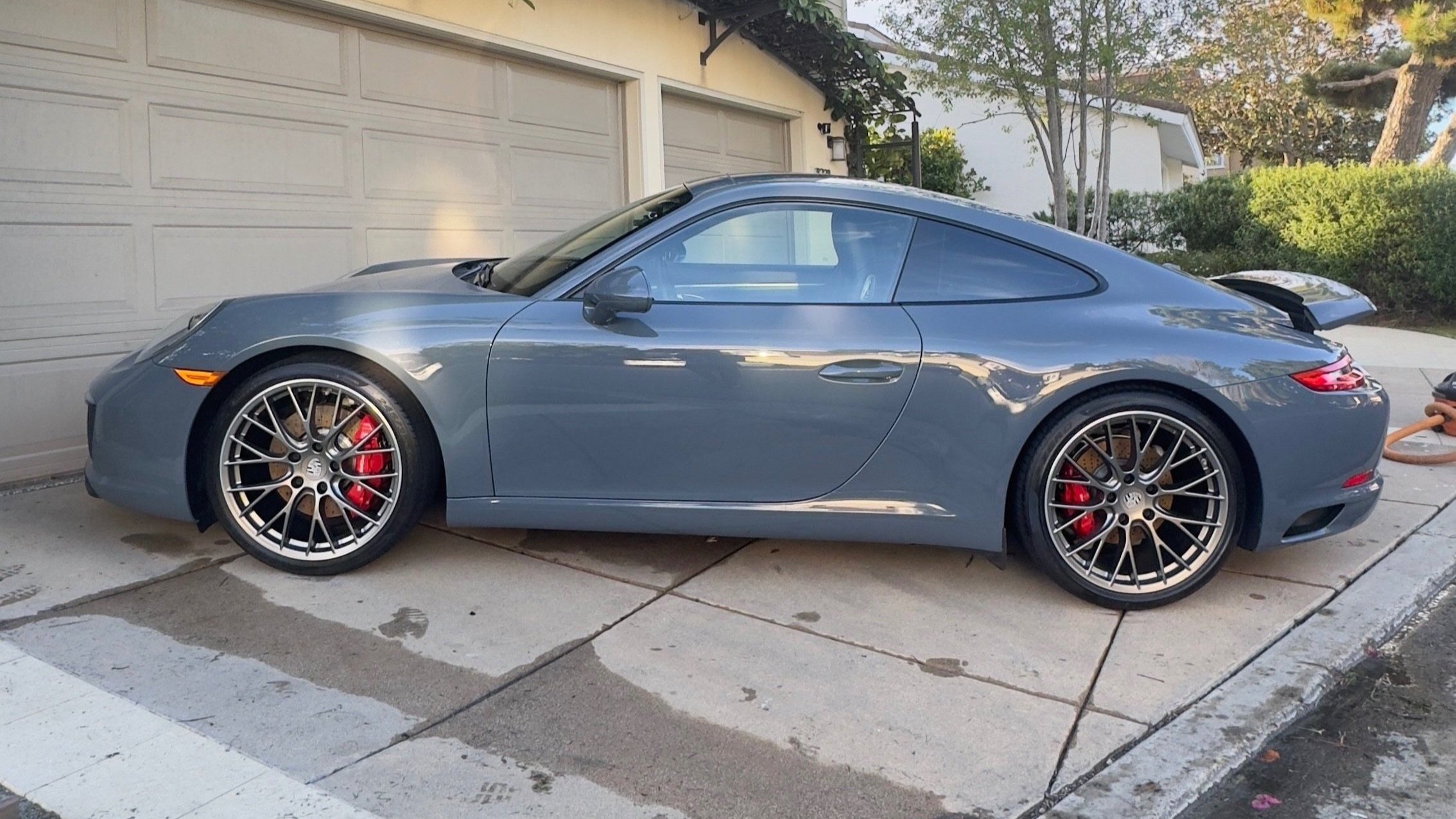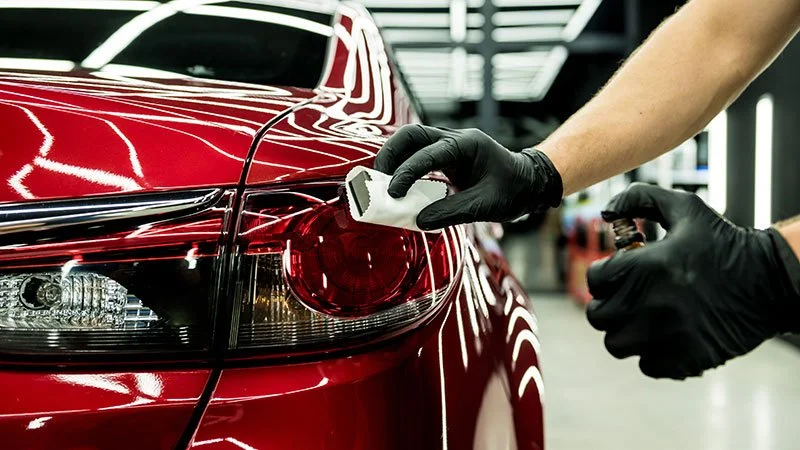The Ultimate Guide to Paint Protection
Preserving Your Vehicle's Beauty
Introduction to Paint Protection
In the world of automotive care, paint protection is a crucial element in maintaining a vehicle's aesthetic appeal and value.
Whether you're a car enthusiast or someone who takes pride in their vehicle's appearance, understanding the importance of paint protection is essential.
This comprehensive guide will explore the various aspects of paint protection, exploring methods, benefits, and best practices for keeping your car looking showroom-fresh for years to come.
Why Paint Protection Matters
Paint protection is not just about maintaining a glossy finish; it's about preserving the integrity of your vehicle's exterior. Here are some key reasons why paint protection should be a priority:
Prevents damage from environmental factors
Maintains resale value
Reduces the need for frequent touch-ups and repairs
Enhances the overall appearance of your vehicle
Understanding the Threats to Your Car's Paint
Before we dive into the solutions, we must understand what we're protecting against. Your car's paint faces numerous threats daily:
UV rays
Bird droppings
Tree sap
Acid rain
Road salt
Stone chips
Scratches from improper washing
These can cause significant damage if left unchecked, making paint protection an essential aspect of car care.
Types of Paint Protection
1. Ceramic Coating
Ceramic coating has revolutionized the world of paint protection. This liquid polymer is applied to the exterior of a vehicle and chemically bonds with the factory paint, creating a layer of security.
Benefits of Ceramic Coating:
Long-lasting protection (up to 6 years with proper maintenance)
Hydrophobic properties for easier cleaning
Enhanced gloss and depth of color
Resistance to UV rays, chemicals, and minor scratches
Ceramic Coating Comparison Table
| Coating Type | Durability | Cost | Application | Protection Level |
|---|---|---|---|---|
| Consumer Grade | 1-2 years | $ | DIY possible | Good |
| Professional Grade | 2-5 years | $$$ | Professional only | Excellent |
| Industrial Grade | 5+ years | $$$$ | Professional only | Superior |
This table quickly compares different ceramic coating options, helping you choose the proper protection for your vehicle.
2. Paint Protection Film (PPF)
Paint Protection Film, also known as clear bra, is a thermoplastic urethane film applied to a vehicle's painted surfaces to protect against stone chips, bug splatter, and minor abrasions.
Advantages of PPF:
Provides a physical barrier against road debris
Self-healing properties (some high-end films)
It can be applied to high-impact areas or the entire vehicle.
Preserves paint in its original condition
3. Synthetic Sealants
Synthetic sealants offer a more durable alternative to traditional car wax. These products create a thin, protective layer over the paint surface.
Key Features of Synthetic Sealants:
Longer-lasting than traditional wax (up to 6 months)
Excellent beading and sheeting properties
Enhanced resistance to environmental contaminants
Relatively easy to apply
4. Traditional Car Wax
While not as durable as modern solutions, traditional car wax still plays a role in paint protection:
It provides a sacrificial layer that protects the clear coat.
Enhances shine and depth of color
Easy to apply and remove
Generally more affordable than other options
The Paint Protection Process
Achieving optimal paint protection involves several steps:
Thorough Cleaning: Remove all contaminants from the paint surface.
Clay Bar Treatment: Eliminate embedded contaminants that washing can't remove.
Paint Correction: Address any scratches, swirl marks, or oxidation.
Protection Application: Apply your chosen method of paint protection.
Curing: Allow the protection to cure correctly for maximum effectiveness.
Maintaining Your Paint Protection
Once you've invested in paint protection, proper maintenance is crucial:
Regular washing with pH-neutral car shampoo
Avoid automatic car washes with harsh brushes.
Use microfiber towels for drying and detailing.
Please apply a booster product like the manufacturer recommended.
Please address any damage as soon as possible to avoid further issues.
Paint Protection for Different Environments
The type of paint protection you choose may vary depending on your local environment:
Coastal Areas
Higher risk of salt and sand damage
Consider PPF for front-facing surfaces.
Ceramic coating for overall protection against salt air
Urban Environments
Increased exposure to pollutants and bird droppings
Ceramic coating can provide excellent protection.
Regular decontamination washes are crucial.
Rural Areas
More exposure to tree sap and insect remains.
PPF on the front end can prevent chip damage on gravel roads
Synthetic sealants offer good all-around protection.
DIY vs. Professional Paint Protection
| Category | DIY Paint Protection | Professional Paint Protection |
|---|---|---|
| Pros |
|
|
| Cons |
|
|
While some paint protection methods can be applied at home, others require professional expertise:
DIY-Friendly Options:
Traditional car wax
Some synthetic sealants
Basic ceramic coating sprays
Professional Services:
High-grade ceramic coatings
Paint Protection Film installation
Paint correction before protection application
DIY vs. Professional Paint Protection
This comparison highlights the critical differences between DIY and professional paint protection approaches, helping you decide based on your needs and resources.
The Future of Paint Protection
As automotive technology advances, so does paint protection. Here are some emerging trends:
Graphene-infused Coatings: Offering even more excellent durability and heat dissipation.
Brilliant Films: PPF that can change color or opacity electronically.
Nano-ceramic Sprays: Easier application with some of the benefits of professional coatings.
Self-healing Clear Coats: Factory paint with built-in healing properties.
Environmental Considerations in Paint Protection
As we become more environmentally conscious, the paint protection industry is adapting:
Water-based sealants with lower VOC emissions
Eco-friendly packaging for protection products
Sustainable manufacturing processes for PPF and ceramic coatings
Cost Analysis of Paint Protection
Investing in paint protection can seem expensive upfront, but it's essential to consider the long-term benefits:
Reduced need for paint correction and touch-ups
The higher resale value of the vehicle
There is less frequent need for reapplication compared to traditional methods.
Cost-Benefit Analysis of Paint Protection Methods
This chart illustrates the cumulative costs of different paint protection methods over five years. While some methods have higher upfront costs, their durability and effectiveness may prove more economical in the long run.
Common Mistakes in Paint Protection
To ensure you get the most out of your paint protection, avoid these common pitfalls:
Skipping proper paint preparation
Applying for protection in direct sunlight or extreme temperatures
Using incompatible products
Neglecting maintenance after application
Expecting perfection from a single application
Choosing the Right Paint Protection for Your Needs
Selecting the best paint protection method depends on various factors:
Your budget
The age and condition of your vehicle
Your local climate and driving conditions
How long do you plan to keep the vehicle?
Your willingness to maintain the protection
I'd like you to please consult with a professional detailer who can assess your specific situation and recommend the best protection method.
Conclusion: The Value of Paint Protection
Investing in paint protection is about more than maintaining appearances; it's about preserving your vehicle's value and integrity. Consistency and proper application are critical whether you choose ceramic coating, PPF, synthetic sealants, or traditional wax.
Remember, paint protection is not a one-time solution but an ongoing process. Regular maintenance and periodic reapplication will ensure your vehicle looks its best for years. By understanding the options available and making an informed decision, you can enjoy a car that performs well and turns heads wherever you go.
Take the time to research your options, consider your specific needs, and don't hesitate to seek professional advice. Your car's paint is its first line of defense against the elements, and with the proper protection, it can remain a source of pride and joy for as long as you own it.




